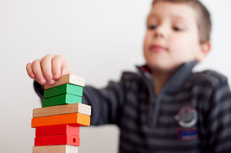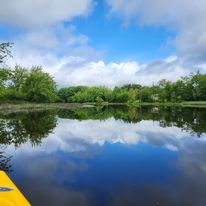| By Jana Nicol It may seem like a daunting task at first to transition to a UDL framework. When I consider what a universally designed classroom looks like, and the work involved into creating lesson plans that follow the principles of UDL every single period of every single day, it is difficult not to get overwhelmed - especially considering how many other demands there are on a teacher's time! So why bother to change at all? |
more flexible and accessible. The benefits of this are two-fold: in the short-run, a greater number of students' needs are met; and in the long-run teacher workload can actually be reduced (because less time is spent on differentiating instruction). Implementing UDL is worthwhile.
Starting small is a way to gradually implement UDL in your own teaching without becoming overwhelmed.
Here are some tips to taking on UDL in a manageable way:
For example, I started doing UDL by setting the following goal for myself at the beginning of the school year: 'by November, I will have arranged the visuals, furniture and supplies in an organized manner that allows students to spend minimal effort on accessing materials they need, so that they can better focus on learning.' This included things like making sure students could reach all materials they needed, that shelves and drawers were labeled with words and pictures so that everyone could read it (and to help build literacy skills), having a system for sharpening pencils so that students always had access to sharp pencils to use (so they are not wasting time sharpening pencils), making sure all of the technology in the room worked properly and that students were trained on how to use it, etc.
Other goals could include things like: creating a universally designed lesson, unit plan, set of activities (e.g. universally designed Math games or word games), collaborating with other teachers, reading a book or article about UDL, using a tool/resource you find from a great UDL website, etc.
2. Focus on one subject area at a time. Begin with your comfort-zone.
When creating lessons, activities, and finding materials to create a universally designed learning experience for your class, it helps to focus on one subject area at a time. For example, the first few UDL lesson plans I created were all Math lessons, because this was my comfort zone. It may be reading, word work, science, social studies, or visual arts for you. Once I had a good bank of Math lessons, I challenged myself to write UDL lesson plans for other subject areas. It was easier to write lessons for different subjects after I wrote a few UDL Math lessons because my understanding of the principles of UDL had improved.
3. Remember that it's not all new!
Rather than thinking of UDL as an entirely separate entity, I prefer to think of it is a collection of better practices many teachers are already following. Teachers should be encouraged to plan their instruction with the practices and tools they already use that reinforce UDL principles, such as: Multiple Intelligences, Bloom's Taxonomy, cooperative learning, project-based learning, formative assessment, and Response to Intervention.
4. Collaborate and learn more - at a realistic pace.
Check out UDL websites - many have excellent resources and articles. Search for UDL on twitter, and follow users who share your interest in the topic. Join (or start up) a book-study group in your school or district. Choose a book about UDL for your summer reading list. Meet other teachers who share your interest in UDL and have shop-talk over a coffee. Look for PD opportunities on UDL in your school district. There is a wealth of information, but there is no need to consume all of it at once. Take your time to soak in some new information and figure out how it may impact your teaching. It's a marathon, not a sprint!


